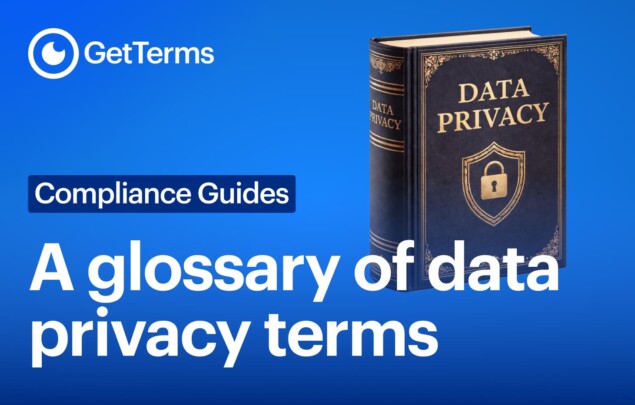Building a portfolio website is an exciting endeavor. It serves as your digital showcase, a platform to proudly exhibit your work and skills to the world. However, amid this excitement, it’s crucial not to overlook a key aspect: the privacy of your visitors. If your website collects any personal data, having a privacy policy isn’t just a recommended practice—it’s often a legal requirement. In this article, we’ll take you through the process of creating your own privacy policy for your portfolio website.
Why do you need a privacy policy?
Before we dive into the nitty-gritty details, let’s understand why a privacy policy is essential for your portfolio website:
- Legal Compliance: Depending on where you operate and the nature of your website, you may be legally obligated to have a privacy policy. Laws like the GDPR, CCPA, and others mandate that websites collecting personal data must disclose how that data is used and protected.
- Building Trust: A transparent privacy policy demonstrates your commitment to respecting your visitors’ privacy. By being upfront about your data practices, you can build trust with your audience, fostering stronger relationships and credibility.
- Third-party Requirements: Many third-party services, such as Google Analytics or email marketing platforms, require websites to have a privacy policy as part of their terms of service. Failure to comply could result in limitations or restrictions on using these services.
How to create a privacy policy
Understanding the significance of having a privacy policy is just the beginning. Here’s a breakdown of how you can create one:
Use a Privacy Policy Generator
Save time and effort by leveraging a Privacy Policy Generator like GetTerms, which offer both free and paid options depending on how much compliance is required. These handy resources prompt you with questions about your website’s data practices. Then, a customized policy tailored precisely to your needs.
Use a Privacy Policy Template
If you prefer a more hands-on approach, kickstart your privacy policy journey with a pre-made template. Templates provide a solid foundation that you can customize to match your website’s unique data collection and usage practices. This ensures alignment with relevant laws and regulations while streamlining the process.
Try our privacy policy template
Write your own privacy policy
For those well-versed in privacy laws and regulations, crafting a privacy policy from scratch is an option. However, this approach demands thorough research and meticulous attention to detail. You’ll need to cover all essential elements comprehensively to ensure compliance and transparency.
Take a look at our guide on how to make a privacy policy
What to Include
To keep things in line with privacy rules, it’s super important for your portfolio website’s privacy policy to include all the nitty-gritty details. I’ve gone ahead and laid out everything you need to know in the sections below, so you can rest easy knowing you’re covered.
-
- Introduction: Begin with a clear introduction that outlines who you are, what your website is about, and why you collect personal data.
- Types of Information Collected: Specify the types of information you collect from visitors, such as names, email addresses, or browsing behavior.
- Purpose of Collection: Explain why you collect this information and how you use it. Whether it’s to improve user experience or send promotional emails, transparency is crucial.
- Data Security Measures: Assure visitors that their data is safe with you by outlining the security measures you have in place to protect against unauthorized access or misuse.
- Third-party Disclosure: Disclose if you share visitor data with third parties and why. This could include analytics tools, advertising networks, or other service providers.
- User Rights: Inform visitors about their rights regarding their personal data, such as the right to access, rectify, or delete their information.
- Policy Updates: Explain how you’ll notify visitors of any changes to your privacy policy and when those changes will take effect.
Privacy laws that might apply to your website
Ensuring Compliance with Privacy Laws is important for any portfolio website owner, as failure to do so can result in legal repercussions and damage to your reputation. Let’s check out some key privacy laws that may affect your portfolio website:
-
- General Data Protection Regulation (GDPR)
If your website serves users in the European Union (EU) or European Economic Area (EEA), you must adhere to the GDPR. This regulation mandates transparent data practices, explicit consent for data collection, and robust rights for data subjects. Your privacy policy must detail what data you collect, how you collect it, the purpose for collection, data retention periods, and more.
- California Consumer Privacy Act (CCPA)
Serving individuals in California subjects your website to the CCPA. This law requires transparency in data collection, granting users the right to know what personal data is collected, how it’s used, and the option to opt-out of data selling or sharing.
- California Online Privacy Protection Act (CalOPPA)
Websites with visitors from California collecting personal data must comply with CalOPPA. This law mandates the inclusion of specific details in privacy policies, such as the effective date, categories of personal information collected, and processes for altering personal information.
- Children’s Online Privacy Protection Act (COPPA)
If your portfolio website targets children under 13 in the United States, COPPA applies. This law provides specific privacy protections for children and requires compliance with strict guidelines for collecting personal information from minors.
- Colorado Privacy Act (CPA)
Offering services to Colorado residents subjects your website to the CPA. Your privacy policy must outline what personal data is collected, why it’s collected, categories of data shared with third parties, and more.
- Utah Consumer Privacy Act (UCPA)
Effective from December 31, 2023, the UCPA grants Utah residents the right to know the data collected about them through websites. Your privacy statement should address data collection, usage, user access, and opt-out mechanisms if you serve Utah residents.
- Virginia Consumer Data Protection Act (VCDPA)
Websites catering to Virginia residents may fall under the VCDPA. Your privacy policy must detail data collection, purposes for processing, categories of data shared with third parties, user rights, and mechanisms for appeal related to consumer requests.
- Personal Information Protection and Electronic Documents Act (PIPEDA)
Serving individuals in Canada requires compliance with PIPEDA. Your privacy policy should inform site visitors about data collection practices, types of data collected, consent mechanisms, and user rights regarding their data.
Understanding and adhering to these privacy laws is crucial for creating a comprehensive privacy policy that protects your visitors’ privacy rights and ensures legal compliance. Failure to comply with these regulations can result in significant consequences for your portfolio website.
Where to display your privacy policy on your portfolio website
Once you’ve created your privacy policy, it’s crucial to make it easily accessible to your visitors. Consider placing it in the following locations:
-
- Website Footer: Include a link to your privacy policy in the footer of your website for easy access from any page.
- Sign-up Forms: If your website includes sign-up forms or contact forms, link to your privacy policy near these forms to inform users about data collection practices.
- Pop-up Banners: If you use pop-up banners for cookie consent or other notifications, include a link to your privacy policy within these banners for transparency.

